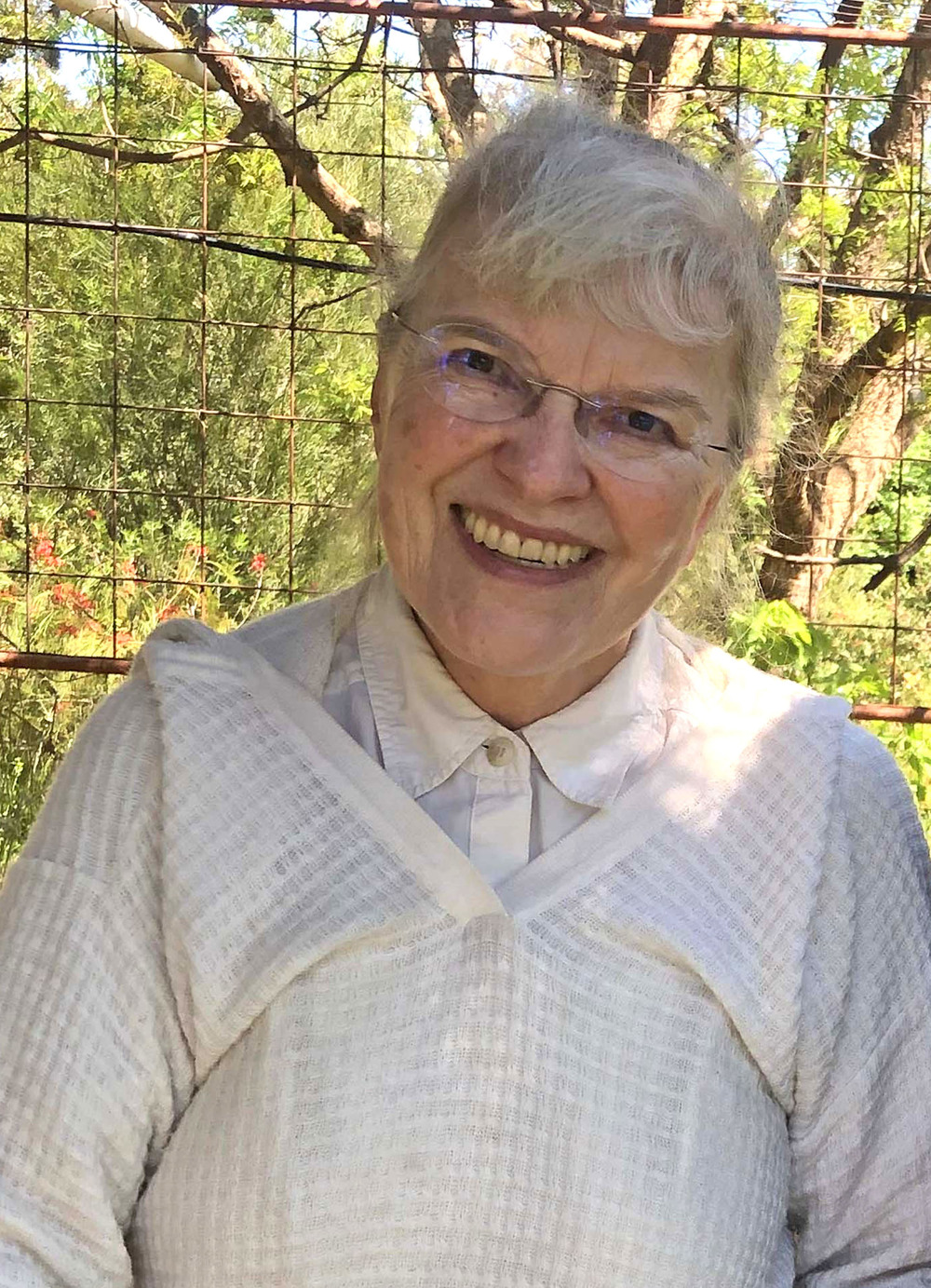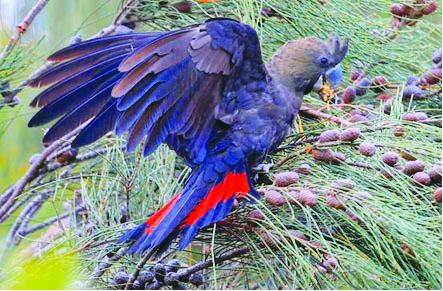Scientist alarmed over vanishing Pilliga species
Liz Cutts
14 March 2022, 8:15 PM
 After visiting the Pilliga Forest for many years, a zoologist has expressed concern over the future of the native Glossy Black Cockatoo population. PHOTO: NSW National Parks and Wildlife Service
After visiting the Pilliga Forest for many years, a zoologist has expressed concern over the future of the native Glossy Black Cockatoo population. PHOTO: NSW National Parks and Wildlife ServiceA ZOOLOGIST is hoping her observations spur government on to fund more conservation measures to save iconic native wildlife in the Pilliga Forest.
Dominique Homberger, an Alumni Professor of Louisiana State University in the United States enjoys nothing more than visiting Australia to study native parrots.
Dr Homberger took the opportunity to visit the Pilliga Forest and Warrumbungle National Park when she was in the country recently.
“I came to Australia to study the ecology and feeding behavior of cockatoos and parrots for the first time during my year-long sabbatical in 1987-88,” Dr Homberger said.
“Over the years my husband and I have developed a special connection to and love for the Pilliga, Baradine, Coonabarabran and the Warrumbungles."
"The staff at the National Parks and Wildlife Service have provided invaluable assistance to my research, as well as Baradine ornithologist, the late David Johnston.
“Their knowledge and expertise and willingness to go out of their way to provide information and facilitate my research made all the difference."
Dr Homberger’s particular interest is in the evolutionary history of the Psittaciformes, one of the largest orders of birds with about 350 species of parrots and cockatoos.
“I have also studied them, although to different extents, in India, and Patagonia and made brief observations in New Zealand, South Africa and the United States," she said.
“We have visited every region of Australia at least once and usually several times, except the York Peninsula and the north-western part of Australia.”
“Our Australian friends joke that we could save a lot of money by simply staying in Australia!"

ABOVE: US-based zoologist Professor Dominique Homberger has become very invested in the future of native vegetation and wildlife over multiple visits to Australia. Image supplied.
Observations
“Visiting and revisiting places where we previously observed cockatoos and parrots provides insights in possible behavioral variations over time and under different environmental conditions," Dr Homberger said.
“These repeated observations are especially important in Australia because of the varying drought conditions and the environmental changes due to destructions of the natural habitat and climate change.
“I became especially interested in Black-Cockatoos for several reasons: they occur only in Australia (with the exception of the very special Palm Cockatoo which occurs also in New Guinea)."
“In 1988, the Pilliga, as the largest inland forest in Australia, was to our admittedly naïve eyes quite intact, although I realize now that it has been exploited for timber and mining ever since settlers arrived.
“By the time of our visit in 2000, things had started to change drastically in the forest.
"The tracks were widened and increased in numbers and the prescribed burning had reduced the density of the undergrowth, including the Sheoak species (Allocasuarina) on which the Glossies depend for their food.”
“We returned again and again in the following years without being able to see any Glossies and being alarmed at the ecological decline and intensification of industrial extractive activities in the Pilliga."
Shocked
“Our visit this time was especially depressing as the state of the Pilliga had further deteriorated since 2017," Dr Homberger said.
“We were shocked and saddened to learn that the Narrabri gas project was being approved by the Federal Government. Not only would such a project hasten the deterioration of the Pilliga as a national treasure, but would also endanger the scarce water resources through fracking activities.”
“On a positive note, we observed a pair of Glossies and heard about two or three additional pairs nearby, in a part of the Pilliga we had not visited before and which had been spared the devastation of fires. It was one of the highlights of our visit to Australia this time.”

The native glossy black cockatoo is a specific bird species of interest to Dr Homberger. PHOTO: NSW National Parks and Wildlife Service (Charles Dove)
“The Pilliga is an absolute treasure of global importance because of its unique flora and fauna and its size. Instead of accelerating its industrial exploitation, the Pilliga and Goonoo forests could be designated a World Heritage site.”
Dr Homberger says it is incongruous that Australia criticizes Brazil for destroying the Amazonian rainforest and the dry forest of the Caatinga, but allows and even promotes the destruction of its own unique and wonderful forests and wildlife.
“The efforts by the Central Inland Glossy Black-Cockatoo Working Group to count the Glossies residing in the Pilliga by watching them coming to drink are crucially important as a basis for estimating the degree of endangerment this species is facing,” Dr Homberger said.
“That only about 800 individuals were counted in November 2019 is most worrisome, especially since that there are reasons to expect fewer breeding successes in the near future and that Glossies raise a maximum of only one young every two years.
“The low count, however, may goad governmental entities to fund conservation measures to save this iconic Australian species in the Pilliga.
“Such conservation measures would also benefit Koalas and many other vertebrate, invertebrate and plant species,” she said.
“I hope that our observations may help guide the environmental management plans to save the Pilliga Glossies.”


